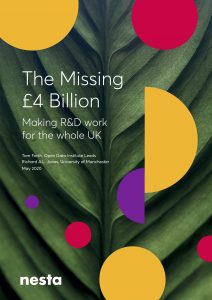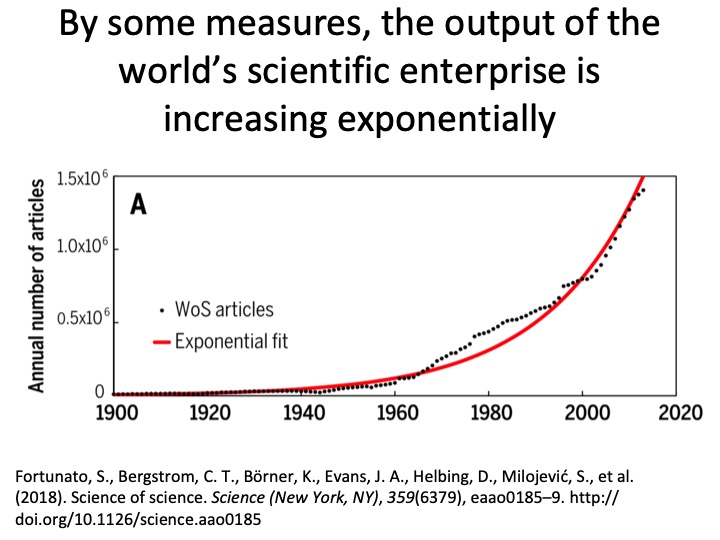Sunshine is the best disinfectant, they say – but if you live in Lancashire, you might want to have some bleach as a backup. Sunshine works to bleach clothes and hair too – and before the invention of the family of chlorine based chemicals that are commonly known as bleach, the Lancashire textile industry – like all other textile industries around the world – depended on sunshine to whiten the naturally beige colour of fabrics like cotton and linen. It’s this bright whiteness that has always been prized in fine fabrics, and is a necessary precondition for creating bright colours and patterns through dyeing.
As the introduction of new machinery to automate spinning and weaving – John Kay’s flying shuttle, the water frame, and Crompton’s spinning mule – hugely increased the potential output of the textile industry, the need to rely on Lancashire’s feeble sunshine to bleach fabrics in complex processes that could take weeks was a significant blockage. The development of chemical bleaches was a response to this; a significant ingredient of the industrial revolution that is perhaps not widely appreciated enough, and an episode that demonstrates the way scientific and industrial developments went hand-in-hand at the beginning of the modern chemical industry.
It’s not obvious now when one looks at the clothes in 17th and 18th century portraits, with their white dresses, formal shirts and collars, that the brilliant white fabrics that were the marker of their rich and aristocratic subjects were the result of complex and expensive set of processes. Bleaching at the time involved a sequence of repeated steepings in water, boiling in lye, soaping, soaking in buttermilk (and towards the end of this period, dilute sulphuric acid) – together with extensive “grassing” – spreading the fabrics out in the sun in “bleachfields” for periods of weeks. These expensive and time-consuming processes were a huge barrier to the expansion of the textile industry, and it was in response to this barrier that chemical bleaches were developed in the late 18th century.
The story begins with the important French chemist Claude-Louis Berthollet, who in 1785 discovered and characterised the gas we now know as chlorine, synthesising it through the reduction of hydrochloric acid by manganese dioxide. His discovery of what he called “dephlogisticated muriatic acid” [1] was published in France, but news of it quickly reached England, not least through direct communication by Berthollet to the Royal Society in London. Only a year later, the industrialist Matthew Boulton and his engineer partner James Watt were visiting Paris; they met Berthollet, and were able to see his initial experiments showing the effect chlorine had on colours, either using the gas directly or in solution in water. The potential of the new material to transform the textiles industry was obvious both to Berthollet and his visitors from England.
James Watt had a particular reason to be interested in the process – his father-in-law, James McGrigor – owned a bleaching works in Glasgow. Watt had soon developed an improvement to the process for making chlorine; instead of using hydrochloric acid, he used sulphuric acid and salt, exploiting the new availability and relative low cost of sulphuric acid since the development of the lead chamber process in 1746 by John Roebuck and Samuel Garbett. In 1787 he sent a bottle of his newly developed bleach to his father-in-law, and arranged for a ton of manganese dioxide [2] to be sent from Bristol to Glasgow to begin large scale experiments. Work was needed to develop a practical regime for bleaching different fabrics, to find methods to assay the bleaching power of the solutions, and to develop the apparatus of this early chemical engineering – what to make the vessels out of, how to handle the fabric. By the end of the year, with the help of Watt, McGrigor had successfully scaled up the process to bleach 1500 yards of linen.
Meanwhile, two Frenchmen – Antoine Bourboulon de Boneuil and Matthew Vallet – had arrived in Lancashire from Paris, where they had developed a proprietary bleaching solution – “Lessive de Javelle” – which built on Berthollet’s work (without his involvement or approval). This probably used the method of dissolving the chlorine in a solution of sodium hydroxide, which absorbs more of the gas than pure water. This produces a solution of sodium hypochlorite, like the everyday “thin bleach” of today’s supermarket shelves. In 1788 Bourboulon petitioned Parliament to grant them an exclusive 28 year license for the process (a longer period than a regular patent). This caused some controversy and was strongly opposed by the Lancashire bleachers, but placed James Watt in an awkward position. Naturally he opposed the proposal, but didn’t want to do this too publicly, as his own, very broad, patent (with Matthew Boulton) for the steam engine had been extended by Act of Parliament in 1775, leading to lengthy litigation. Nonetheless, after the intervention of Berthollet himself and the growing awareness of the new science of chemical bleaching in the industrial community, Bourboulon only succeeded in obtaining patents for relatively restricted aspects of his process, that were easily evaded by other operations.
Claude-Louis Berthollet’s position in this was important, as his priority in discovering the basic principles of chlorine bleaching was universally accepted. But Berthollet was an exponent of the principles of what would now be called “open science” and consciously repudiated any opportunities to profit from his inventions – as he wrote to James Watt, “I am very conscious of the interest that you take in a project which could be advantageous to me; but to return to my character, I have entirely renounced involvement in commercial enterprises. When one loves science, one has little need of fortune, and it is so easy to expose one’s happiness by compromising one’s peace of mind and embarrassing oneself”. Watt was clearly frustrated by Berthollet’s tendency to publish the results of his experiments, which often included rediscovering the improvements that Watt himself had made.
But by this stage, any secrets were out, and other Manchester industrialists, together with a new breed of what might be called consulting chemists, who kept up with the latest scientific developments in France and England, were experimenting and developing the processes further. Their goals included driving down the cost, increasing the scale of operations, and particularly improving their reliability – it was all too easy to ruin a batch of cloth by exposing it too long or using too strong a bleaching agent, or to poison the workmen with a release of chlorine gas. In fact, one shudders to think about the health and safety record and environmental impact of these early developments. Even by 1795, it still wasn’t always clear that the new methods were cheaper than the old ones, particularly for case of linen, which was significantly more difficult to bleach than cotton. Despite the early introduction of “Lessive de Javelle”, the stability of bleaching fluids was a problem, and most bleachers preferred to brew up their own as needed, guided by lots of practical experience and chemical knowledge.
Bleaching probably could never be made entirely routine, but the next big breakthrough was to create a stable bleaching powder which could be traded, stored and transported, and could be incorporated in a standardised process. Some success had been had by absorbing chlorine in lime. The definitive process to make “bleaching powder” by absorbing chlorine gas in damp slaked lime (calcium hydroxide), to produce a mixture of calcium hypochlorite and calcium chloride, was probably developed by the Scottish chemist Charles Macintosh (more famous as the inventor of the eponymous raincoat). The benefits of this discovery, though, went to Macintosh’s not wholly trustworthy business partner, Charles Tennant, who patented the material in 1799.
What are the lessons we can learn from this episode? It underpins the importance of industrial chemistry, an aspect of the industrial revolution that perhaps is underplayed. It’s a story in which frontier science was being developed at the same time as its industrial applications, with industrialists understanding the importance of being linked in with international networks of scientists, and organisations like the Manchester Literary and Philosophical Society operating as important institutions for diffusing the latest scientific results. It exposes the tensions we still see between open science and the protection of intellectual property, and the questions of who materially benefits from scientific advances.
As the nineteenth century, the textile industry continued to be a major driver of industrial chemistry – the late 18th century saw the introduction of the Leblanc process for making soda-ash, and the nineteenth century saw the massive impact of artificial dyes. These developments influence the industrial geography of England’s northwest to this day.
[1] When Berthollet discovered chlorine, it was in the heyday of the phlogiston theory, so, not appreciating that what he’d discovered was a new gaseous element, he called it “dephlogisticated muriatic acid” (muriatic acid being an old name for hydrochloric acid). As Lavoisier’s oxygen theory became more widely accepted, the gas became known as “oxymuriatic acid”. It was only in 1810 that Humphry Davy showed that chorine contains no oxygen, and is in fact an element in its own right. Phlogiston has a bad reputation as a dubious pre-scientific relic, but it was a rational way of beginning to think about oxidation and reduction, and the nature of heat, giving a helpful guide to experiments – including the ones that eventually showed that the concept was unsustainable.
[2] It’s interesting to ask why there was an existing trade in manganese dioxide. This mineral had been used since prehistory as a black pigment, and is unusual as a strong oxidising agent that is widely found in nature. In Derbyshire it occurs as an impure form known to miners as “wad”; when mixed with linseed oil (as you would do to make a paint) it occasionally has the alarming property of spontaneously combusting. This was recorded in a 1783 communication to the Royal Society by the renowned potter Josiah Wedgwood, who ascribed the discovery to a Derby painter called Mr Bassano, and reported seeing experiments showing this property at the house of the President of the Royal Society, Sir Joseph Banks. Spontaneous combustion isn’t a great asset for a paint, but at lower loadings of manganese dioxide a less dramatic acceleration of the oxidation of linseed oil is useful in making varnish harden more quickly, and it was apparently this property that led to its widespread use in paints and varnishes, particularly for ships in the great expansion of the British Navy at the time. More pure deposits of manganese dioxide were found in Devon, and subsequently in North Wales, as the bleach industry increased demand for the mineral further. The material gained even more importance following Robert Mushet’s work on iron-manganese alloys – it was the incorporation of small amounts of manganese that made the Bessemer process for the first truly mass produced steel viable.
[3] Sources: this account relies heavily on “Science and Technology in the Industrial Revolution”, by A. E. Musson and E. Robinson. For wad, “Derbyshire Wad and Umber”, by T.D. Ford, Mining History 14 p39.
Edited 23/8/21 to make clear that Bourboulon’s petition to Parliament was for a longer period of exclusivity than a standard patent. My thanks to Anton Howes for pointing this out.

